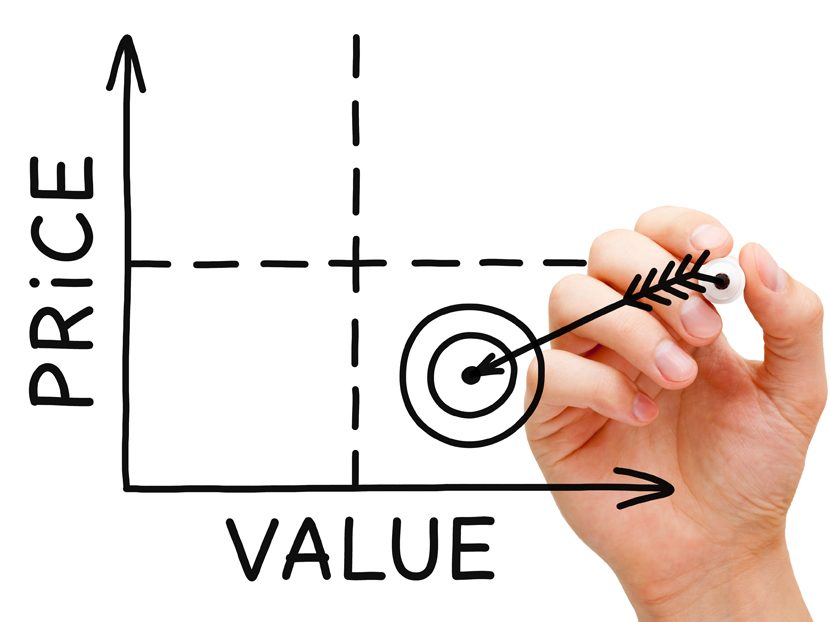What is a Fair Price?
Once we decide what ‘fair’ and ‘price’ mean, actually determining a fair price brings up more questions.

The goal of consumers dealing with contractors is to get an excellent job at the lowest price. The goal of contractors dealing with consumers is to deliver an excellent job to consumers while recovering their true cost for performing that excellent job, thus, giving their businesses the opportunity to sell services at the highest price so they can earn the maximum reward for delivering excellence.
The common denominator is excellence. But the diametrically opposed positions on price are the sticking points. This brings up the question: What exactly is a fair price?
What is fair?
The first thing to consider is the definition of the word “fair.”
Simply put, fair is a two-way street. In the PHC contracting business, two parties agree to exchange obligations before entering a binding agreement. The consumer asks for the service. The contractor offers to perform the service for a specific amount.
If the consumer accepts the contractor’s proposal, the contractor performs the task. That’s fair.
What is a fair price?
A “fair price” is a price that allows the contractors to be able to afford to deliver excellence to consumers while contractors recover their costs for the performance, and earn the maximum rewards commensurate with the caliber of service performed.
Developing a fair price is a bit more complex and brings up other questions.
What is true cost?
To arrive at true cost, contractors must identify and calculate their total business operational costs inclusive of all legitimate tangible business expenses for which they spend actual money, as well as intangible business expenses that don’t have a visible price tag, but cost them just the same.
For example, since contractors don’t actually see themselves paying money to a vendor, the expense associated with callbacks is an intangible business expense.
Once contractors know their total legitimate annual true operational costs, they can divide that total cost by the maximum number of annual units available for sale in order to arrive at the cost per unit if they sell all their units.
In the PHC service profession, those units are potential revenue-producing hours.
What is a potential revenue-producing hour?
It’s an hour that has the potential to bring money into your business.
How many potential revenue-producing hours are there in a year? There are 2,080 paid hours in a 40-hour/five-day/52-week year. But all those hours are not potential revenue-producing hours.
If a contractor allows two weeks for technician vacation/personal time, for example, those 10 workdays cannot bring in money.
That’s 80 hours (5 days/week x 2 weeks x 8 hours/day = 80 hours) to subtract from 2,080. Six holidays would further lower the amount of potential revenue-producing hours by 48 (6 holidays x 8 hours/day = 48 hours).
Next, contractors must consider that technicians have nonrevenue-producing duties such as checking their trucks’ vital signs, inventory control and turning in paperwork to the office. With efficiency, this time can be kept to one hour per day.
There are 244 workdays in a work year after subtracting two weeks for vacation/personal time and six holidays. Therefore, 244 additional hours must be subtracted from the 2,080 hours contractors pay for in order to address nonrevenue-producing duty time.
That only leaves 1,708 maximum potential revenue-producing hours per technician per year even though they are paid for 2,080 hours (2,080 paid hours less 372 non-revenue-producing hours [80 + 48 + 244]).
However, except for the liars, no contractor sells all their potential revenue-producing tech hours all the time. This means there is another factor that must be considered to address unapplied labor costs.
What is the unapplied labor cost factor to be considered?
As an example, if contractors only sell 70 percent of their annual available revenue-producing tech hours and their base cost (based on selling all the hours) is $100, their true cost per tech hour would actually be $142.86. Here’s how that mathematically plays out:1,708 hours x $100 = $170,800. But 70 percent of 1,708 hours is 1,195.6 hours sold. $170,800 ÷ 1,195.6 hours sold = $142.86.
That means contractors would need a 30 percent profit margin applied to their $100 cost to recover the $142.86 true cost ($100 ÷ 70 percent = $142.86) incurred. $42.86 is 30 percent of the $142.86 selling price, and, $42.86 subtracted from $142.86 leaves them with the $100, which is their cost if they sold all their available tech hours all the time.
To address their unapplied labor factor, contractors must have an idea of the percentage of maximum revenue-producing hours they will sell, and use a proper profit margin that can give them the opportunity to get the results they want.
As our example shows if they only sell 70 percent of their maximum revenue-producing hours, they need a 30 percent profit margin on labor and overhead to break even. But there is no reward for just breaking even. So if contractors want profits, they must use a higher profit margin.
What is maximum reward?
Reward is profit which is that amount of money left after paying all business expenses including the salaries of the owners if they work in the business.
Obviously, maximum means the most a contractor can get rather than less.
How do you develop a properly profitable fair price?
Correct and proper calculations of cost, maximum revenue-producing hours and choice of profit margin considering the unapplied labor factor are critical to price being proper, profitable and fair.
It is important to realize that in the United States, the range of cost to the contractor of a qualified service tech and properly equipped service vehicle is $100 to $250 per tech hour dependent on the geographic area and other factors if all tech hours are sold all the time.
If the true cost per tech hour is $100 and contractors wanted a 40 percent profit margin, they would divide the $100 by 60 percent to arrive at a selling price of $166.67. However, at that same profit margin, a cost per tech hour of $250 means the selling price, based on a 40 percent profit margin, would be $416.67. That’s a price difference of $250.
How could a $250 difference in selling prices be considered fair?
Consider that the contractor with the $100 true cost has a lower true cost than the contractor whose true cost is $250.
Contractors with the $100 cost made $66.67 ($166.67 - $100), if they sell all their maximum revenue-producing hours all the time. However, if they only sell 70 percent of their maximum-revenue producing hours, their cost is $142.86. In which case they only make $23.81 ($166.67 - $142.86).
Contractors with the $250 cost made $166.67 ($416.67 - $250), if they sell all their maximum revenue-producing hours all the time. However, if they only sell 70 percent of their maximum revenue-producing hours, their cost is $357.14 ([$250 x 1708 hours] = $427,000 cost to contractor ÷1,196.6 hours sold)]. In which case they only make $59.53.
In both examples, the math is properly calculated, and there is a reward for the contractor.
As to concerns about fairness, if you put $1,000 in the bank and earned a 2 percent interest rate, you would earn $20. But if you put $10,000 in the bank, that same 2 percent would produce $200. Fair is fair. The larger the investment – the more you stand to make. And the money and sweat equity you put into your business is an investment.
I’m not suggesting that you artificially inflate your numbers. I am stating that both prices are fair under the specific circumstances of each of those businesses.
What’s not fair?
It’s not fair if after the task is performed, the consumer reneges on payment or the contractor does not perform the task described.
It’s equally not fair for contractors to sell their services below or at their true costs because contractors would not be able to consistently deliver excellence to consumers, properly compensate technicians, pay creditors in a timely manner and provide a reward to their family.
Are you charging profitable fair selling prices?
There are only three choices regarding selling prices – sell at, below or above true cost.
But selling services at or below true cost is neither profitable nor fair. And it certainly isn’t wise. To succeed in business with less stress and frustration there is only one choice – sell above true cost.
When calculating true cost, it is imperative to remember GIGO the acronym for Garbage In – Garbage Out. If you do not properly identify and/or calculate your true cost, profit margin, and/or development of selling prices you would be using wrong numbers that can only produce wrong results.
Since numbers and factors vary from one business to another, I would need knowledge of your specific factors and expenses to give you a numerical number to answer the fair price question as it pertains to your business. The aforementioned questions and answers should give you a basis to work with.
If you want to attain your contractor profit advantage and need assistance and/or guidance in arriving at proper numbers; addressing consumer questions; implementing logical administrative procedures; hiring, evaluating and incentivizing techs; or have questions and opinions on this article, just call me. l
Richard P. DiToma has been involved in the PHC industry since 1970. As a contracting business coach/consultant he has authored books on contracting business management as well as customized price guides for contractors. For information or to contact DiToma: call 845-639-5050; email richardditoma@verizon.net; mail to R & G Profit-Ability, Inc. P.O. Box 282, West Nyack. N.Y. 10994.





